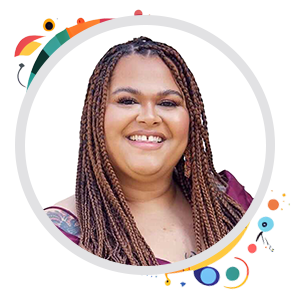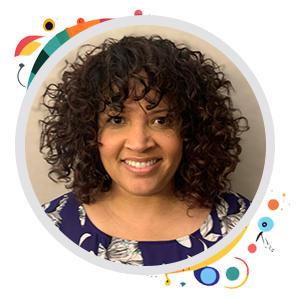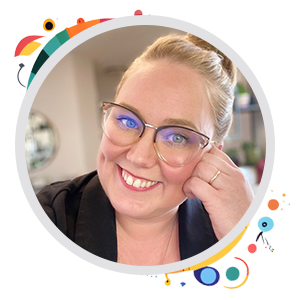Learn Tips and Design Strategies for Accessible & Inclusive Learning
Over the course of these eight sessions, you will learn what it means for learning content to be accessible or inclusive, techniques for creating content that accommodates a diverse learner population, and how to get buy-in from leaders for implementing an inclusive and accessible learning culture.
DAY 1: August 2

101: How & Why to Build Accessibility into the Beginning Stages of Learning Design
David Eifert, PwC
8:30 AM – 9:30 AM PT
Ensuring that learning is accessible to everyone should be baked into our design processes. Explore the basics of WCAG as you learn why buzzers, flashing animations, and hover-and-reveal exercises might be problematic—and how to make all of your content accessible to more learners. Learn more.

201: Designing for Everyone: Tips, Techniques, and Resources
Nick Floro, Sealworks Interactive Studios
10:00 AM – 11:00 AM PT
Most professionals designing learning want to design a best-in-class experience but with time and resource challenges, launching often becomes the top priority. In this session we will explore the critical concept of universal design and how you can apply it to your projects. Learn more.

301: Nurture an Inclusive Culture: What L&D Can Contribute
Jess Jackson, TorranceLearning
11:30 AM – 12:30 PM PT
Creating an inclusive culture—one where all people can work, learn, and thrive—is an essential element of improving accessibility and diversity in your organization. Gain tips for handling issues and learn what L&D teams can do to create a culture of inclusivity and psychological safety throughout the organization. Learn more.

401: Build Accessible & User-Friendly Courses in Articulate Storyline & Rise
Lindsay O'Neill, Lindsay O'Neill Consulting
1:00 PM – 2:00 PM PT
Articulate Storyline and Rise are go-to tools for creating engaging—and accessible—learner experiences. Learn best practices for developing accessible courses in Articulate 360, including the ins and outs of formatting content for keyboard navigation. You'll leave this session with new skills and a handy checklist for creating accessible Storyline and Rise courses. Learn more.
DAY 2: August 3

501: Design for Inclusivity: Diversity, Racial Equity, & Inclusion
Ariana Saunders, Corporation for Supportive Housing
8:30 AM – 9:30 AM PT
Similar to accessibility, design that centers on equity, inclusion, and diversity can reinforce an organization’s DEI values. This session offers concrete strategies and steps to evaluate your current learning from a DEI lens and recognize and mitigate bias in learning design. Learn more.

601: Key Considerations for Building Inclusive & Accessible eLearning
Christine Selinger, Creative by Christine
10:00 AM – 11:00 AM PT
To design accessible and inclusive eLearning, we must go beyond the basics of alt text and screen reader accessibility. This session takes a cross-platform view of what features are available, what is essential, and how to ensure that all learners can participate fully in our learning experiences. Learn more.

701: Ensure That PDF Resources Are Accessible to Learners Using Assistive Technology
Lydia Mans, Freelance
11:30 AM – 12:30 PM PT
Did you know that many learners using assistive technology such as screen readers may not be able to access the PDFs included in your training? This session steps you through creating an accessible PDF, addresses common errors, and shares settings to use for the best results. Learn more.

801: Make Accessibility More Accessible: Increasing Buy-In, Confidence, and Skill
Adam Valencic, Lindenwood University
Kaitlyn Maxwell, Lindenwood University
Kyle Kemble, Lindenwood University
1:00 PM – 2:00 PM PT
A commitment to creating accessible content may not be enough to overcome worries about the enormity of the task. Jump-start your process of improving accessibility with strategies for identifying and mitigating stakeholder concerns and an understanding of how AI can increase the capabilities of assistive and adaptive technology. Learn more.
Purchase the Online Conference Subscription and attend this Online Conference for free; plus, get access to other benefits for the next 12 months!




